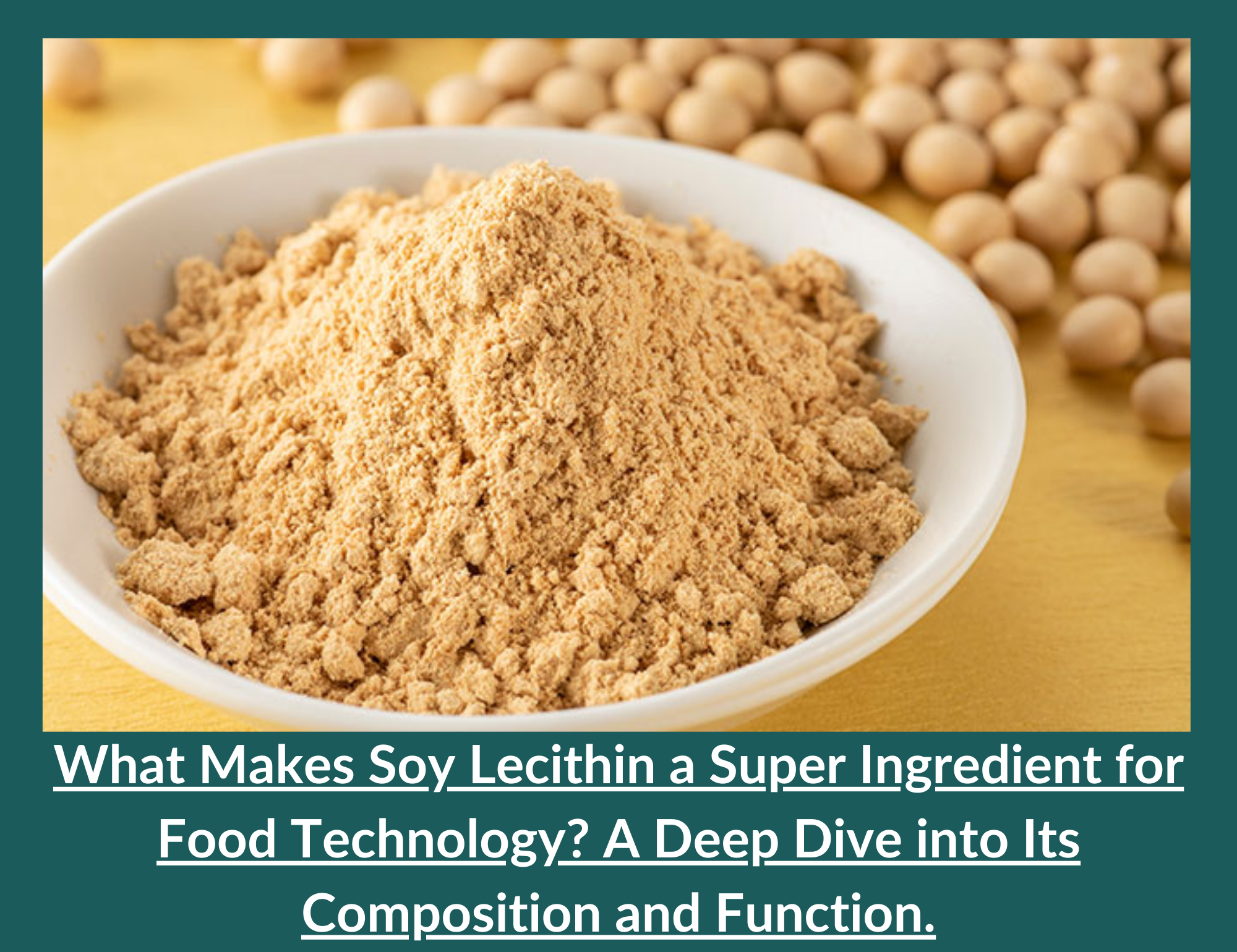Soy lecithin is a widely used emulsifier and stabiliser in the food industry. It is a phospholipid derived from soybeans and has several applications, including as an ingredient in chocolate, margarine, and salad dressings. This article explores the science behind soy lecithin, including its composition and function in food technology.
Composition

Soy lecithin is a complex mixture of phospholipids, triglycerides, and sterols.
- The primary phospholipid is phosphatidylcholine, which makes up approximately 20-30% of the mixture. Other phospholipids include phosphatidylethanolamine, phosphatidylinositol, and phosphatidic acid.
- The triglycerides are predominantly unsaturated fatty acids, such as oleic, linoleic, and linolenic.
The sterols in soy lecithin include cholesterol, campesterol, and stigmasterol.
Function in Food Technology:
Emulsification
An emulsifier is a substance that allows two immiscible liquids, such as oil and water, to mix. In the case of soy lecithin, its phospholipid structure allows it to interact with both water and oil, making it an effective emulsifier.
For example, soy lecithin is added to the cocoa butter in chocolate to create a smooth, consistent texture. The cocoa butter and cocoa solids would separate without an emulsifier, resulting in a gritty texture.
Stabilisation
It also functions as a stabiliser in food technology. It helps to prevent the separation of ingredients, such as water and oil, by creating a more stable mixture. For example, soy lecithin is added to salad dressings to prevent the oil and vinegar from separating over time.
Foaming
It can also be used to create foams in food products. By incorporating air into a soy lecithin mixture, a foam can be created that adds texture and volume to the final product. In some cases, soy lecithin may be used with other foaming agents, such as egg whites, to create a more stable foam.
It is a versatile ingredient in the food industry, with applications ranging from emulsification to foaming. Its unique composition, including a mix of phospholipids, triglycerides, and sterols, allows it to interact with various food ingredients, making it an effective emulsifier and stabiliser. As the demand for natural and sustainable ingredients continues to grow, soy lecithin will likely remain a popular food technology choice.
EasyBuy provides a hassle-free way to procure quality ingredients without the common sourcing challenges faced by food manufacturers. By choosing EasyBuy, you can rest assured that your purchase will be effortless and efficient, with exceptional bargains to help you save money. Don’t hesitate to make your purchase today and experience the convenience of our single-step solution.
Citations
- Decker, E. A., & Hwang, D. (2015). Emulsions and emulsion stability. In Emulsions: Structure, Stability and Interactions (pp. 1-19). CRC Press.
- Gunstone, F. D. (2011). Vegetable oils in food technology: composition, properties and uses. John Wiley & Sons.
- Williams, K. C., & Cargill, J. (2014). Soy Lecithin: History, Uses, and Advantages in Food and Beverage Formulations. Inform. 25(7), 397-401.








